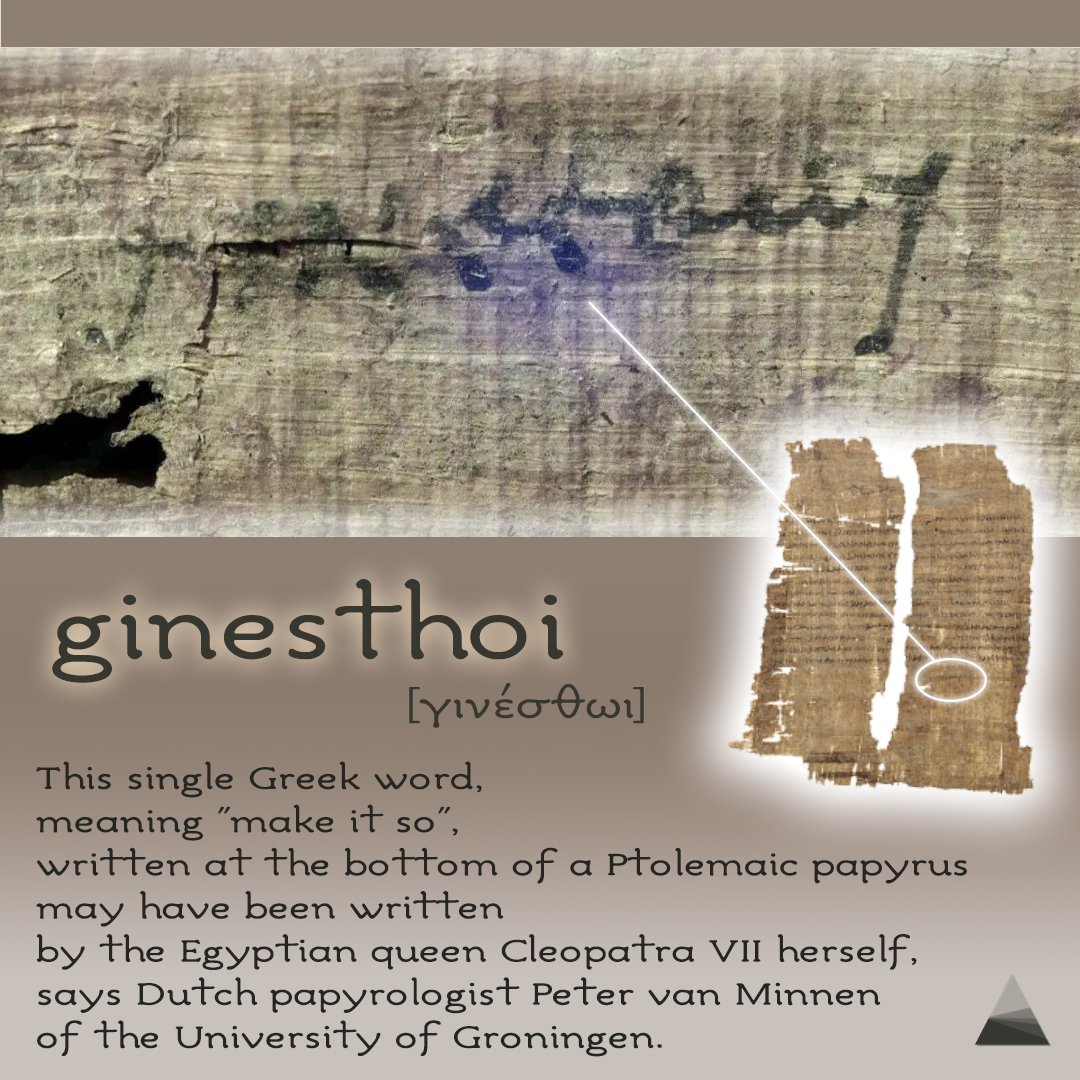"Ginesthoi": This Greek word is believed to be the only surviving handwritten signature of the legendary Queen Cleopatra of Egypt!
A single Greek word, "ginesthoi,” meaning "to do as I command" in free translation, written at the bottom of a Ptolemaic papyrus may have been written by the Egyptian queen Cleopatra VII herself, claims the Dutch papyrologist Peter van Minnen from the University of Groningen.
First of all, it is worth mentioning that Cleopatra makes a grammatical mistake here, which was common for her time. She added a iota (Greek letter ‘ι’) to the medial passive ginesthō and made it ginesthō[i] out of it. This was very common and made under the influence of the singular dative of the second declension that had -i, but the iota was not read by that time. People often added the iota to other forms that originally didn't have it, like future or subjunctive, e.g., aorist subjunctive graps = graps [i].
On February 23, 33 BC, on the 26th day of Mesir, the sixth ancient Egyptian/ Coptic month, also known as Amsir, the text was conveyed to Alexandria. A German expedition discovered it at Abusir in 1904, and it afterwards appears to have been repurposed to make a cartonnage mummy case.
It concerns a royal decree exempting Publius Canidius, a Roman officer and ally of Marcus Antonius, from paying taxes and receiving financial relief. Canidius would go on to lead Marcus Antonius' land force during the Battle of Aktio (Actium) in 31 BC. According to the text:
We have granted to Publius Canidius and his heirs the annual exportation of 10,000 artabas [300 tons] of wheat and the annual importation of 5,000 Coan amphoras [ca. 34,500 gallons] of wine without anyone exacting anything in taxes from him or any other expense whatsoever. We have also granted tax exemption on all the land he owns in Egypt on the understanding that he shall not pay any taxes, either to the state account or to the account of me and my children, in any way in perpetuity. We have also granted that all his tenants are exempt from personal liabilities and from taxes without anyone exacting anything from them, not even contributing to the occasional assessments in the nomes or paying for expenses for soldiers or officers. We have also granted that the animals used for plowing and sowing as well as the beasts of burden and the ships used for the transportation [down the Nile] of the wheat are likewise exempt from 'personal' liabilities and from taxes and cannot be commandeered [by the army]. Let it be written to those to whom it may concern, so that knowing it they can act accordingly.
Make it so!
The personal nature of the communication, which is apparent in the absence of any official presence of Cleopatra's name and in the absence of a title after the name of the employee to whom it was addressed, leads experts to conclude that it is not a copy despite their assertion that it was written by a court scribe. The decree's wording was written first, followed by Cleopatra's signed approval, and finally the date it was received in Alexandria.
Normally, a court scribe would have written and signed such documents, according to Lorelei Corcoran of the University of Memphis. But, because of the papyrus's unique properties, only Cleopatra would be able to grant such orders her own approval. The document is on exhibit in the Egyptian Museum and Papyrus Collection (Egyptisches Museum und Papyrussammlung) in Berlin with the designation "Berlin P 25 239".









